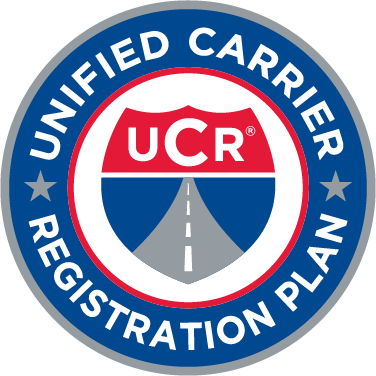The Role of Unified Carrier Registration Adjustments in Reducing Risk

The Unified Carrier Registration (UCR) program is critical in ensuring safe and efficient operations for motor carriers, brokers, and freight forwarders across the United States. Established under federal law, the UCR system is a platform for registering commercial motor vehicle operators and helps fund various safety programs. Adjustments to UCR regulations and requirements significantly mitigate risks associated with compliance, safety, and financial liabilities. We will explore how UCR adjustments impact risk management and why they are vital for the transportation sector, ensuring its continued effectiveness and safety. Check out our website as Federal Motor Carrier Authority Online Filings offering UCR registration.
Streamlining Compliance to Minimize Operational Risks
Unified Carrier Registration adjustments often aim to simplify compliance processes, ensuring that carriers adhere to federal and state requirements. These changes reduce risks by clarifying ambiguities in regulations and making compliance more accessible to carriers of all sizes. For instance, when UCR adjustments include updated fee structures or simplified registration procedures, carriers can more easily fulfill their obligations without confusion. This minimizes non-compliance risk, which can result in penalties, fines, or operational disruptions.
Streamlined compliance also benefits state and federal agencies responsible for enforcing UCR regulations. By updating registration systems or introducing user-friendly tools, these agencies can effectively monitor carrier activity and ensure adherence to safety protocols. This reduces the likelihood of accidents caused by non-compliant operators and fosters a safer transportation environment. Additionally, clearer compliance guidelines encourage carriers to adopt a proactive approach to meeting their obligations, reducing risks associated with oversight or negligence.
Enhancing Data Accuracy for Risk Reduction
UCR adjustments often address the accuracy and reliability of data collected from carriers, brokers, and freight forwarders. Accurate data is crucial for identifying trends, monitoring compliance, and assessing risks within the transportation sector. Changes to registration processes or data reporting requirements can significantly enhance the quality of information available to regulators and industry stakeholders.
When carriers provide accurate and up-to-date information, regulators can better allocate resources to areas of higher risk. For example, identifying patterns in accident rates or non-compliance allows authorities to focus enforcement efforts on specific regions or carrier types that pose greater risks. Similarly, adjustments that mandate more precise reporting of fleet sizes, operational regions, or safety records help create a comprehensive industry picture, enabling more informed decision-making.
Improved data accuracy also directly benefits carriers. With reliable information, they can better assess their risk profiles and implement strategies to address potential vulnerabilities. For instance, a carrier with detailed data on vehicle maintenance or driver performance can identify areas for improvement, reducing the likelihood of accidents or service disruptions.
Financial Risk Mitigation Through Adjusted Fee Structures
Adjustments to UCR fee structures are another vital aspect of risk reduction. These changes often aim to create a fairer distribution of costs among carriers while ensuring adequate funding for safety programs. Revising fee brackets based on fleet size or revenue, UCR adjustments can alleviate financial burdens for smaller operators while maintaining contributions from larger carriers.
Fairer fee structures reduce carriers’ financial strain, allowing them to allocate resources more effectively toward safety and compliance initiatives. This, in turn, minimizes risks associated with insufficient investment in vehicle maintenance, driver training, or regulatory adherence. Additionally, predictable and transparent fee adjustments help carriers plan their budgets more accurately, reducing the risk of financial shortfalls or unexpected expenses.
From a regulatory perspective, adjusted fee structures ensure that UCR funds are appropriately distributed to support safety programs and enforcement efforts. This steady funding stream enables authorities to maintain robust oversight and implement initiatives that reduce risks across the transportation sector.
Promoting Industry-Wide Collaboration and Accountability
UCR adjustments often encourage collaboration and accountability within the transportation industry. By involving carriers, brokers, and regulators in the adjustment process, these changes foster a shared commitment to risk reduction and safety. For instance, public consultations or industry feedback sessions allow stakeholders to voice concerns, propose solutions, and contribute to developing more effective UCR policies.
This collaborative approach strengthens the relationship between carriers and regulators and promotes a culture of accountability. When carriers actively shape UCR adjustments, they are more likely to take ownership of their responsibilities and prioritize compliance. Similarly, regulators benefit from industry insights, enabling them to design policies that address real-world challenges and risks.
Enhanced accountability also extends to safety performance. UCR adjustments that incorporate performance metrics or reporting requirements encourage carriers to maintain high safety and compliance standards. This proactive approach reduces the likelihood of accidents, legal disputes, or reputational damage, benefiting individual carriers and the industry.
The Unified Carrier Registration program is pivotal in reducing risks within the transportation sector by promoting compliance, enhancing data accuracy, and supporting safety initiatives. Adjustments to UCR regulations ensure that the program effectively addresses evolving challenges and fosters a safer operating environment for carriers, brokers, and regulators. UCR adjustments contribute to a culture of accountability and proactive risk management by streamlining processes, improving data quality, and promoting industry collaboration. As the transportation landscape evolves, the UCR program and its adjustments will remain essential for mitigating risks and ensuring the sector’s long-term success.

